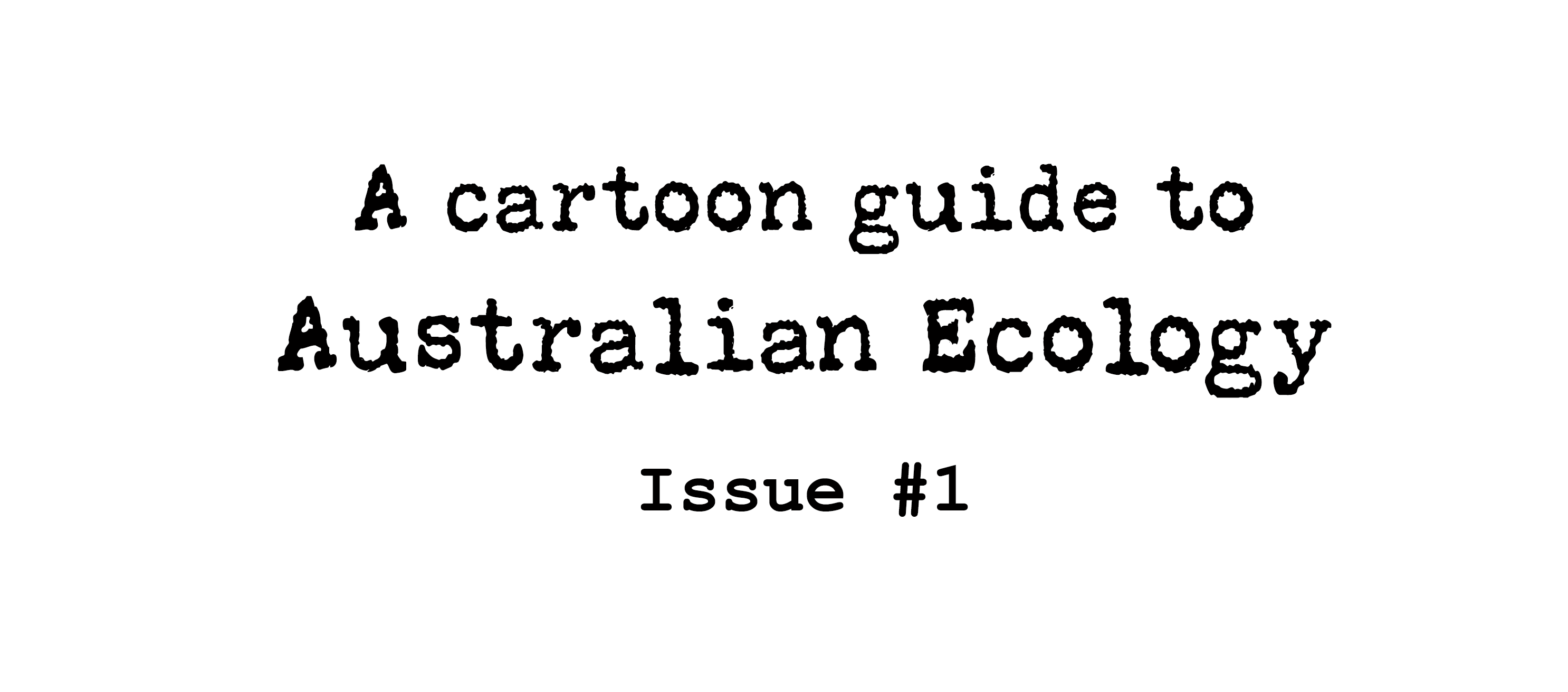
Welcome to the first issue of A cartoon guide to Australian Ecology. In this blog series I’ll explore ecological patterns and processes big and small, using science and my own personal journey to tell the story, all through the visual language of cartoons.
Let’s get started!
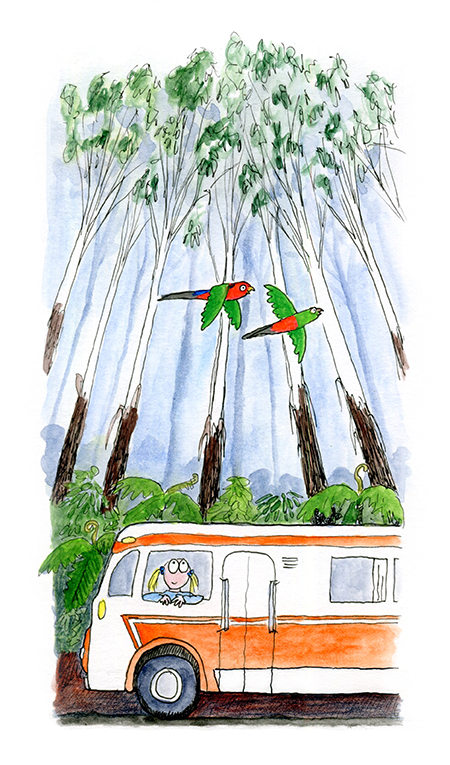
That’s me, in the orange bus. It’s the 1970’s, this bus is our family campervan, and we’re driving through wet sclerophyll forest north of Healesville, in Victoria.
Tall trees tower above me; red flashes of king parrots weave between the pale columns. Giant fern fronds arch and shade the already dark ground. Mist softens the forest as water drips onto leaf mulch, beads on mossy stems, plunks into trickling creeks. A lyrebird calls from a gully thick with Pomaderris and Blanket leaf, swathes of fallen bark strips, and a criss-cross of fallen logs. I look up in awe: these are Mountain Ash, Eucalyptus regnans, the tallest flowering plants in the world.
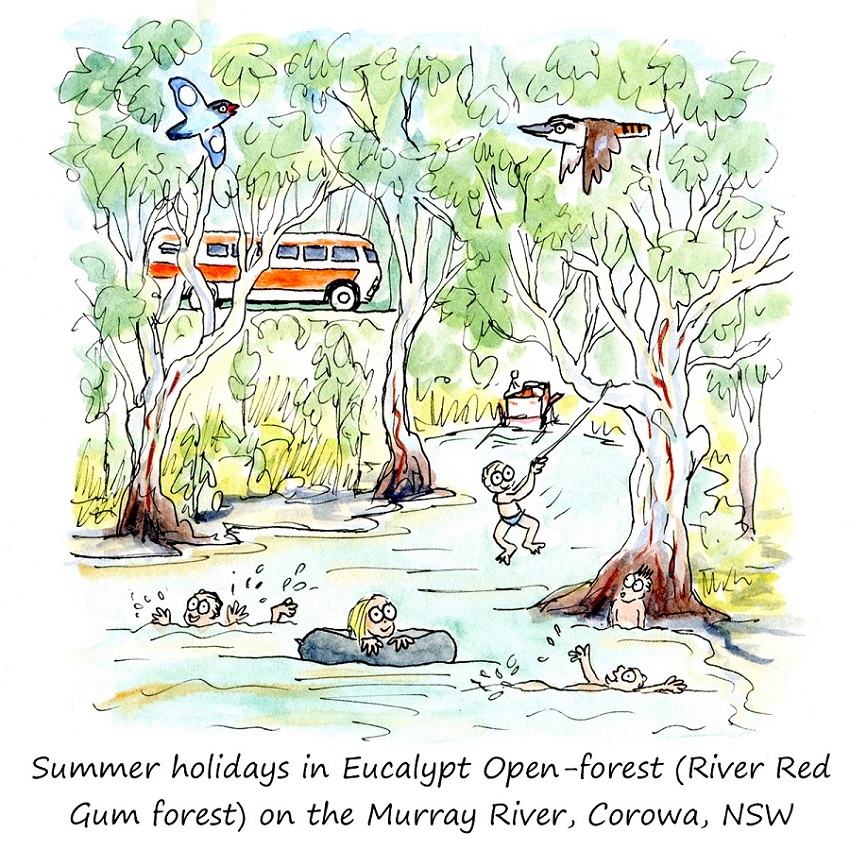
When I was a kid, forests were a familiar sight. We’d go to forest places for family holidays and family picnics. Later, my family lived on the urban fringe of Melbourne, where remnant forest patches were part of the landscape.
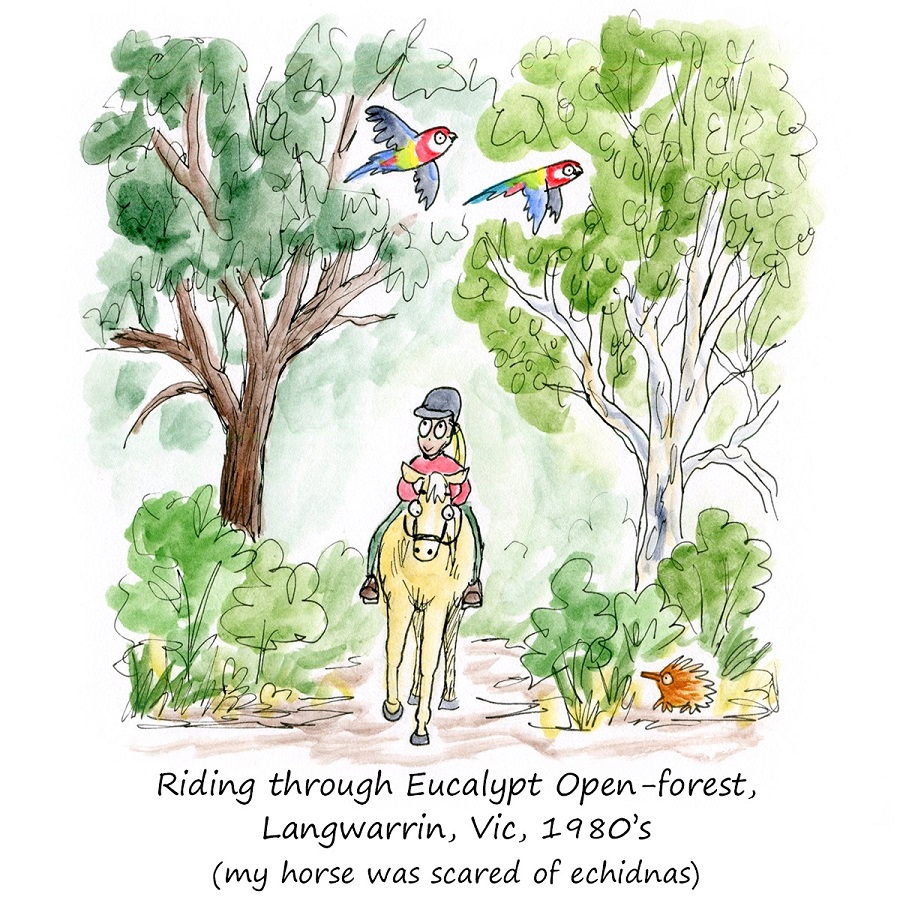
Maybe you’re an Australian who is familiar with forests too?
Most Australians are used to seeing trees and forests. They are the soundtrack, the heartbeat to most Australian lives. Even if only on the edge of a sports field, dog park, motorway or railway line. Or only on summer holidays, or glimpsed out of the window on long road trips interstate.
But did you know that only a small part of Australia is capable of growing forests?
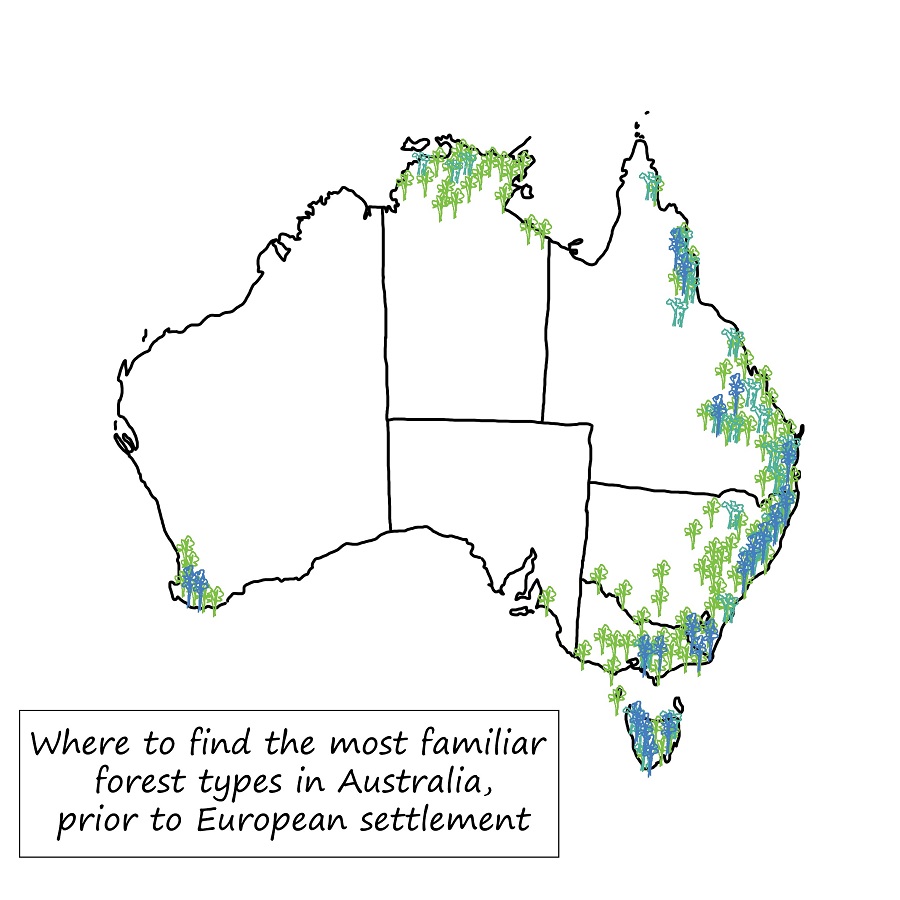
We tend to glimpse these trees and forests because most Australians live where forests once grew – along the coastal strip of the country, where average annual rainfall is relatively high. Much of the original forest of these areas has been removed since European settlement. Cut for timber, and cleared to make space for agriculture, mines, houses, industry and roads. But the potential to grow trees is still there. Remnant forest patches are now often treasured places for rest and recreation.
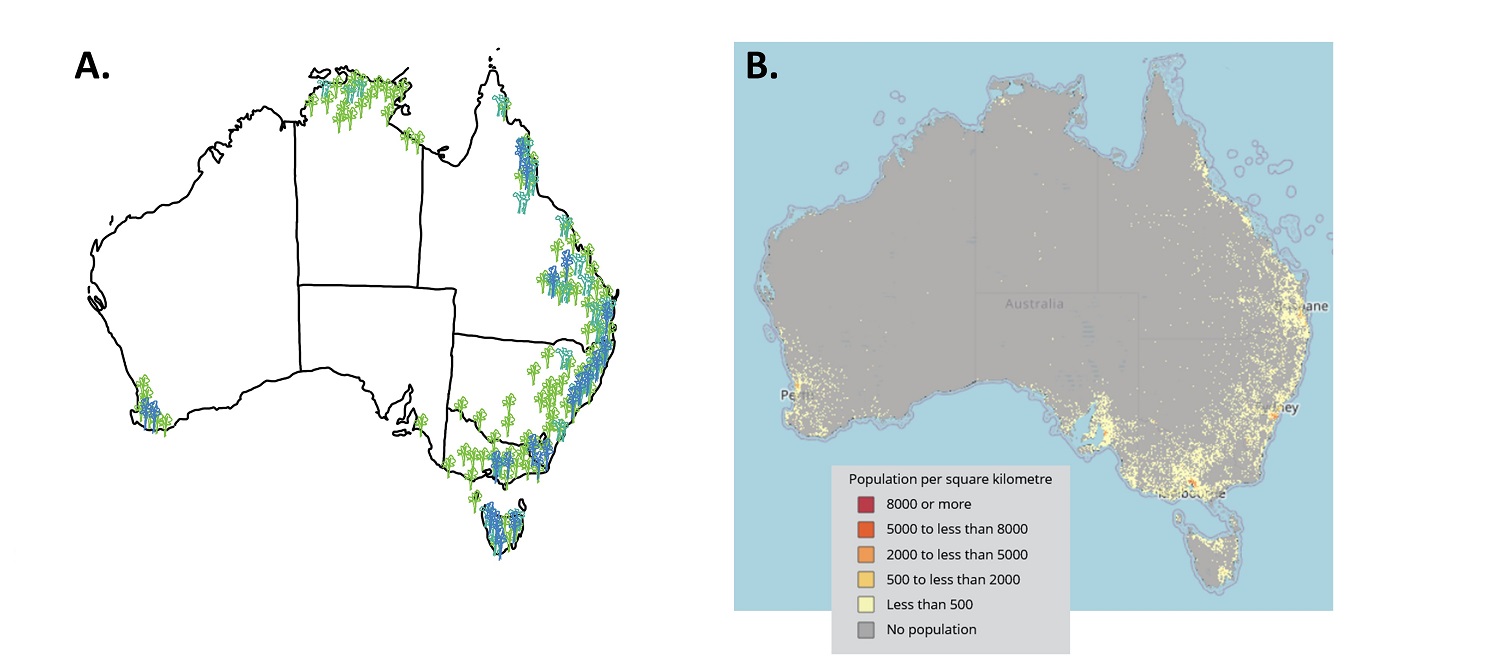
Above: The approximate forest cover in Australia prior to European settlement (a) compared to human population density in 2020 (Australian Bureau of Statistics)(b).
But most of Australia is not capable of growing forests (at this point in time). That’s because most of Australia is just too dry.
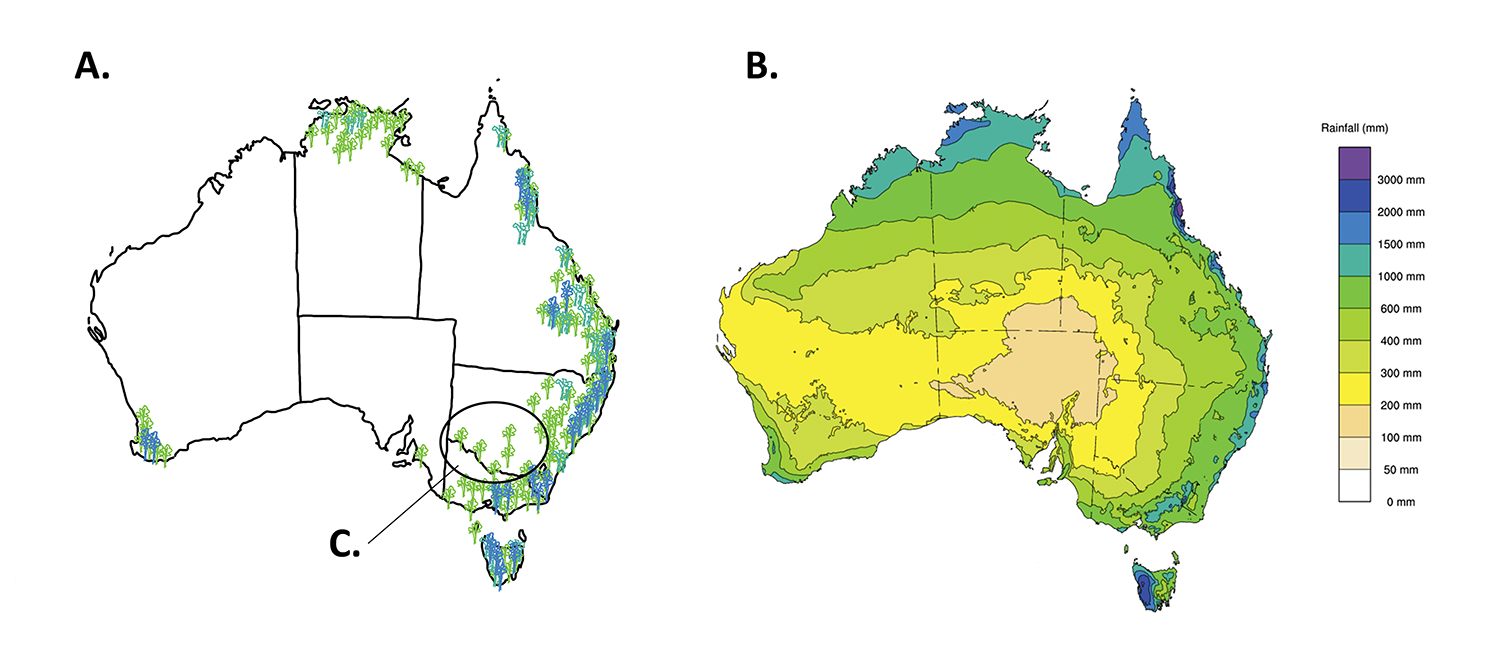
Above: The approximate forest cover in Australia prior to European settlement (a) compared to average annual rainfall (Australian Bureau of Meteorology)(b). Note that forests tend to occur where average annual rainfall exceeds 600 mm per year. Exceptions to this include forests associated with groundwater and surface water e.g. the River Red Gum forests of the waterways and floodplains of the Murray-Darling Basin (c).
So what are the main native forest types of Australia and where do they grow? And what other types of vegetation grow where it’s too dry to grow a forest? This is the first in a series of blog posts that will explore these questions.
Definition of forest
In Australia, a ‘forest’ is defined as a vegetation type where:
- trees are the tallest plants
- the foliage projective cover of the trees (basically the amount of shade cast by the trees) is more than 30%
This definition of ‘forest’ is taken from the Specht structural classification of Australian vegetation (see table below). It includes the categories of Tall closed-forest, Tall open-forest, Closed forest, Open-forest, Low closed-forest and Low open-forest.
Dry sclerophyll forest is a type of Eucalypt Open-forest.
Wet sclerophyll forest is another name for Tall Open Forest.
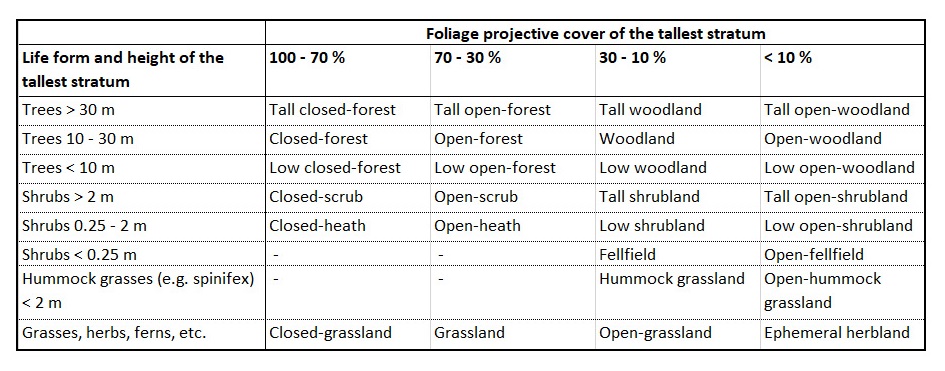
(Note that a tree is defined as a woody plant usually with a single stem; a shrub is a woody plant with many stems arising at or near the base.)
The above table is adapted from Keith (2017) Australian Vegetation, Cambridge University Press, Cambridge; based on Specht, R.L. (1970) Vegetation. In ‘The Australian Environment’, 4th edn. CSIRO Australia and Melbourne University Press, Melbourne. (If you’re after a detailed and up-to-date account of the ecology of Australian vegetation types, Keith (2017) Australian Vegetation is the book to read.)
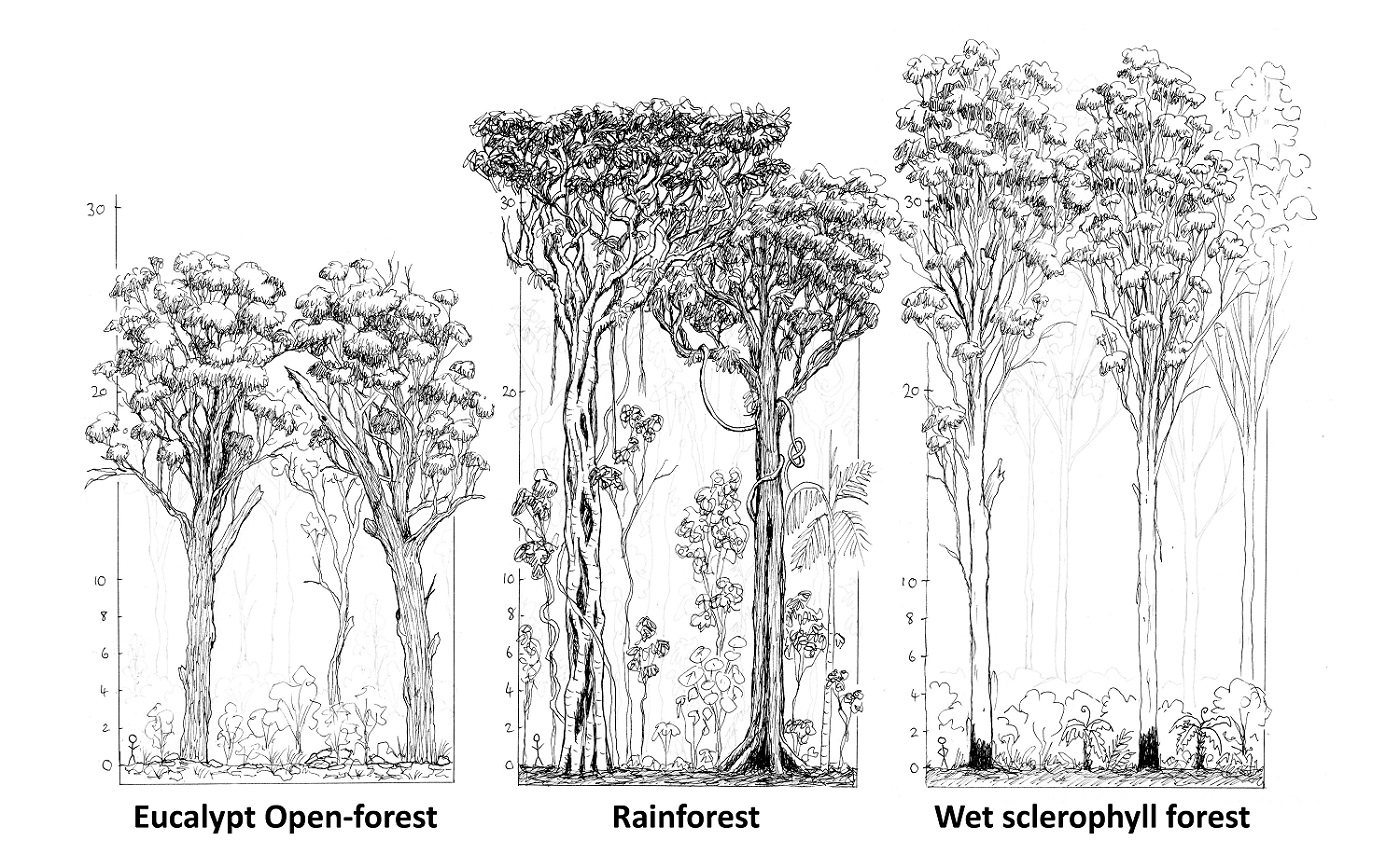
The main three forest types that many Australians are familiar with are Eucalypt Open-forest, Wet sclerophyll forest and Rainforest. Let’s take a look at what characterises these forest types, and where you can find them.
Eucalypt Open-forest
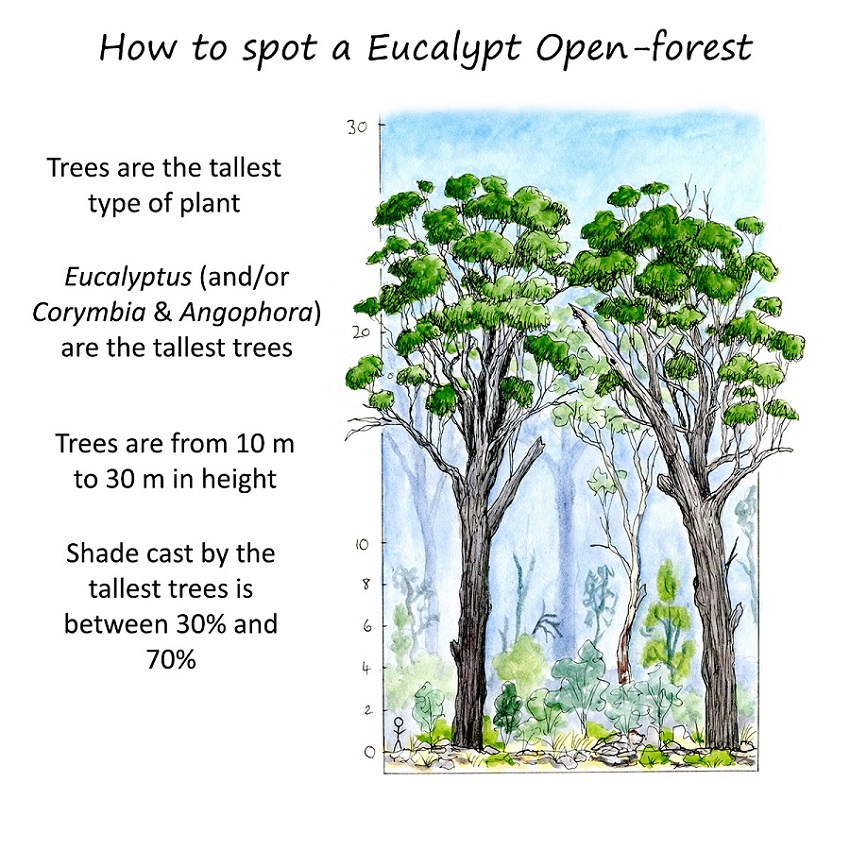
Think the Blue Mountains, the Hawkesbury River catchment, the Grampians and You Yangs, the Adelaide Hills, the Perth Hills, Mt Coot-tha in Brisbane, Black Mountain in Canberra, and the lower slopes of Mount Wellington, near Hobart in Tasmania. The forest areas in these places is mostly Eucalypt Open-forest. In the southern parts of Australia, this forest type is also known as Dry sclerophyll forest. It’s the forest that features in the Frederick McCubbin paintings Lost and The pioneer, and in Tom Robert’s painting Bailed Up.
The illustration above is based on a temperate Dry sclerophyll forest, a type of Eucalypt Open-forest that’s found in southern parts of Australia.
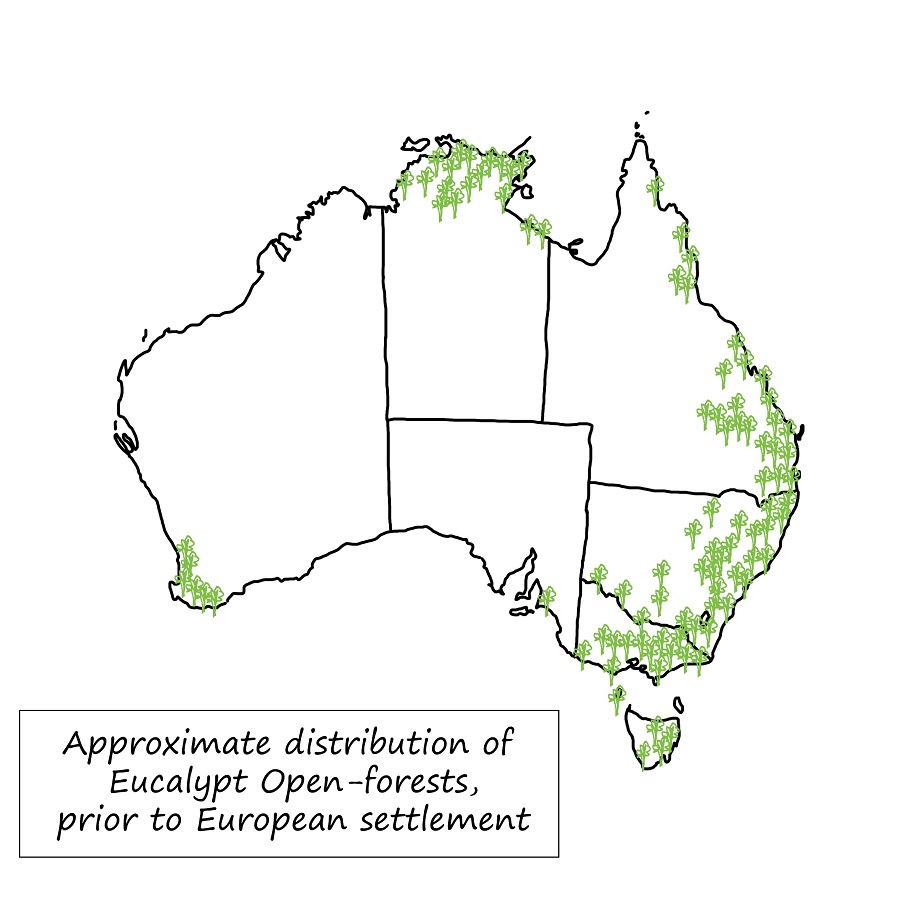
Wet sclerophyll forest
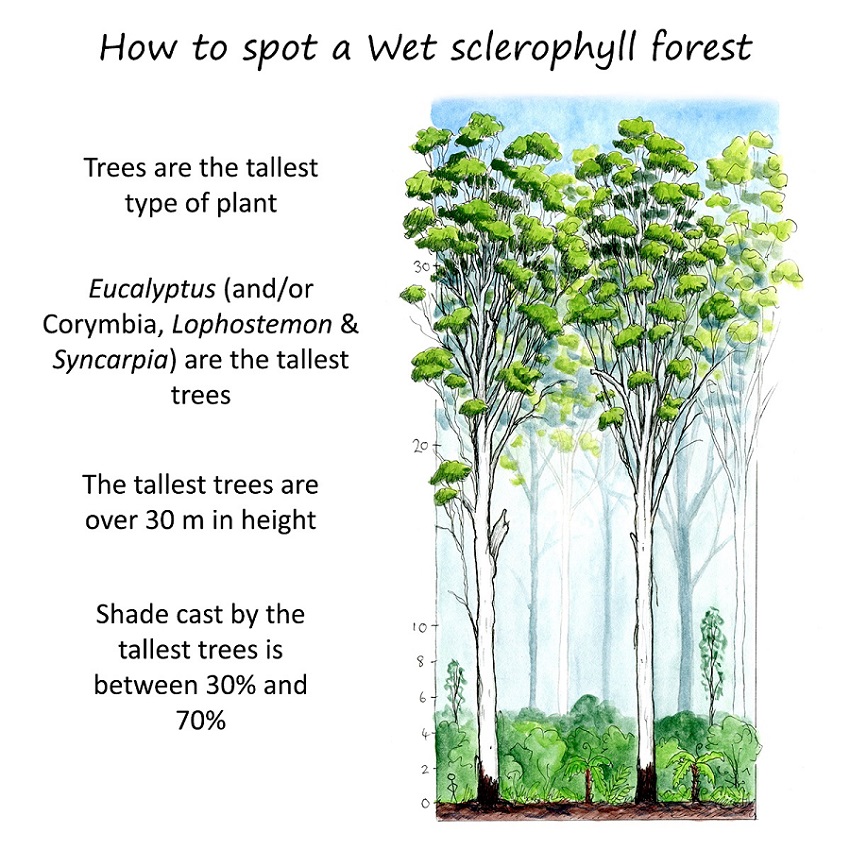
Also known as ‘Eucalypt Tall Open-Forest’
Examples of Wet sclerophyll forests can be found in the Karri forests of south west Western Australia; Mount Dandenong, Kinglake and the Maroondah Catchment of Victoria; Mount Glorious and Mount Tamborine in south east Queensland, and in the lower parts of Mount Field in Tasmania.
The illustration above is based on subtropical Wet sclerophyll forest in south east Queensland, with Flooded Gums Eucalyptus grandis forming the tallest layer of trees.
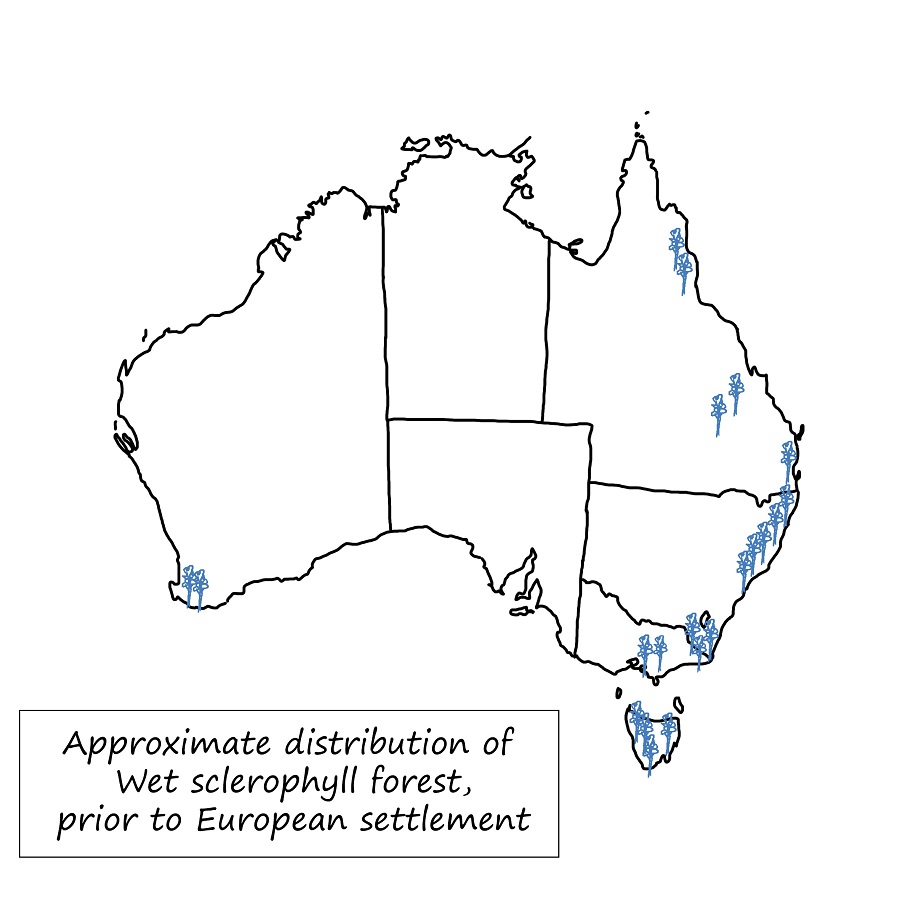
Rainforest
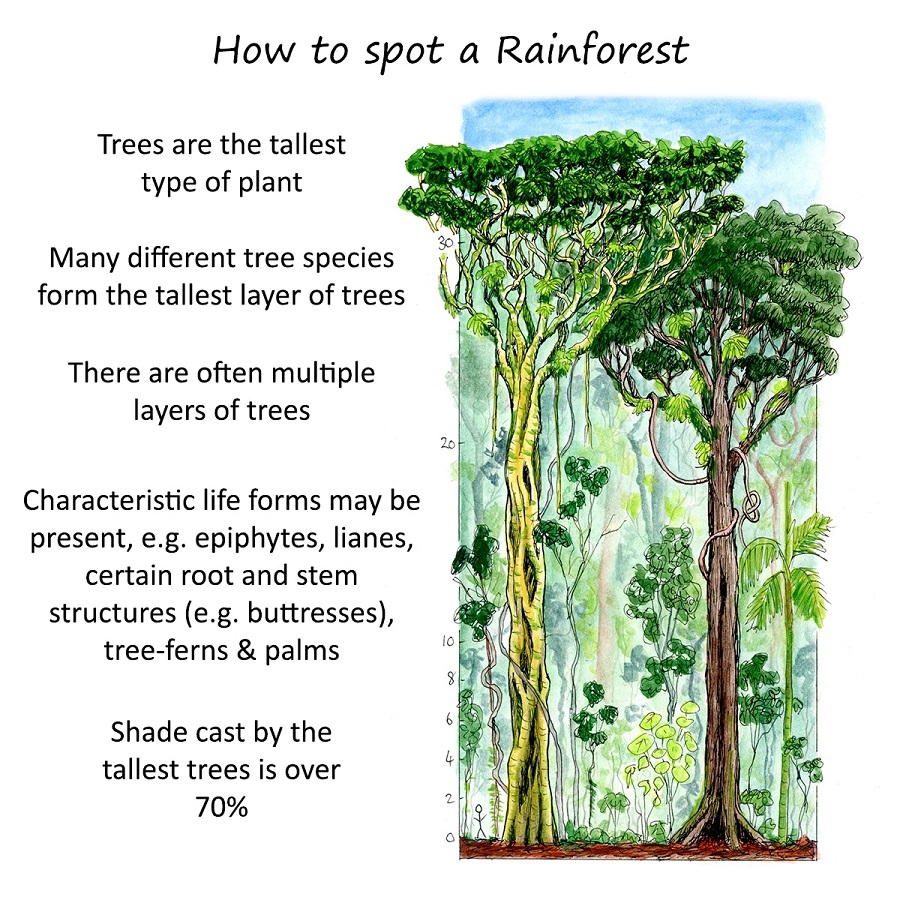
Examples of Rainforest can be found in south west Tasmania, Tara-Bulga National Park in Victoria, Dorrigo and Nightcap in NSW, and in Lamington NP and the Wet Tropics in Qld.
There are many types of rainforest in Australia, including Cool Temperate Rainforest, Semi-evergreen Vine Thickets and Monsoon Vine Forest. The illustration above is based on Subtropical Rainforest, and the two large canopy trees are Watkin’s Fig Ficus watkinsiana (left) and Black Booyong Argyrodendron actinophyllum (right) with the Giant Stinging Tree Dendrocnide excelsa and the Bangalow Palm Archontophoenix cunninghamiana in the understorey.
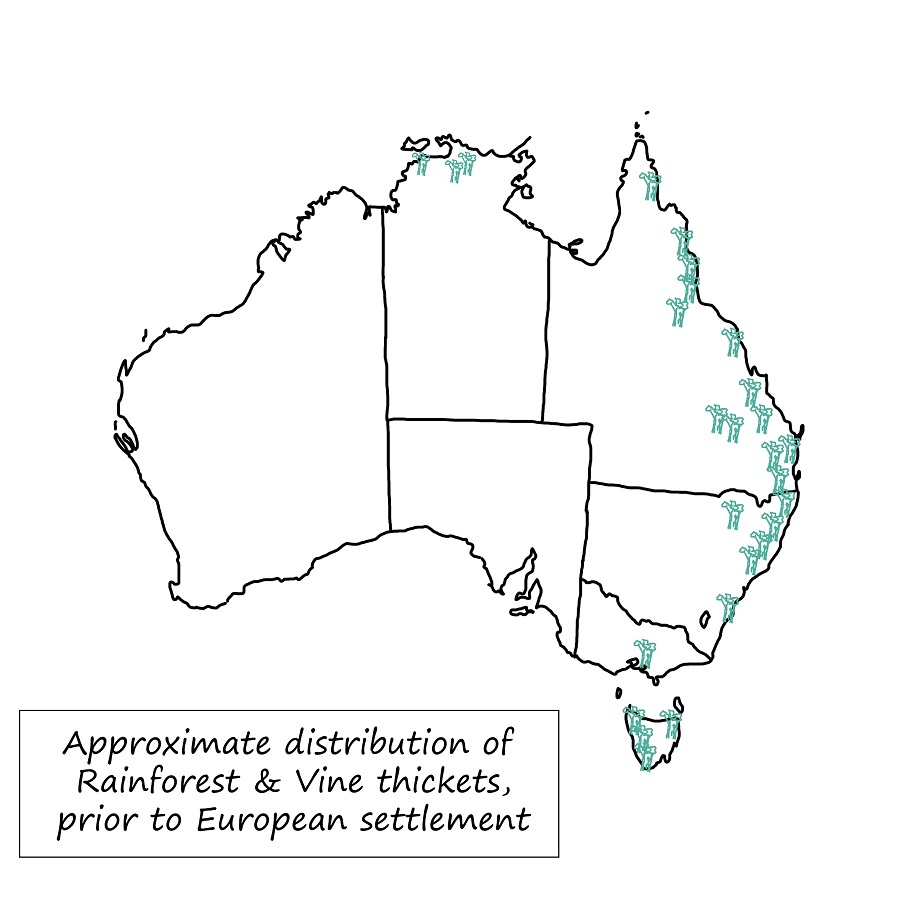
Not all Australian forests are dominated by eucalypts, or are rainforests. Other types of Australian forest include Acacia forests, Casuarina forests, Melaleuca forests and Callitris forests. I’ll explore these in another blog post.
What other types of vegetation grow where it’s too dry to grow a forest? Here’s a hint…
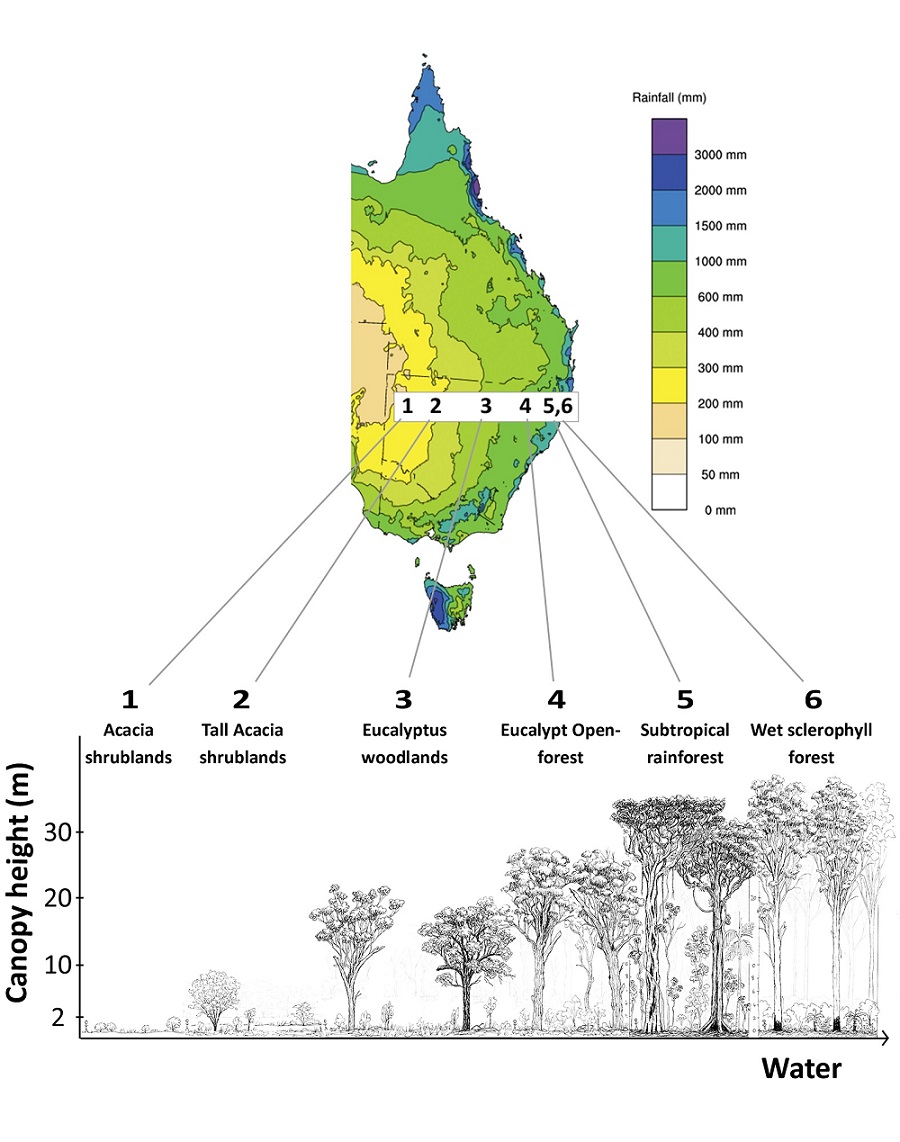
Above: The relationship between average annual rainfall and canopy height of selected vegetation types along an east-west transect in northern New South Wales. Map produced by the Australian Bureau of Meteorology.
More will be revealed in a future episode of ‘A cartoon guide to Australian ecology’!
Subscribe to my newsletter to make sure you never miss an issue!
You can also follow me on Instagram or Twitter.
For a related nature journaling exercise, see:
How do you describe a forest? (or woodland, shrubland, grassland…)
For further reading, check out my Forest portrait series, starting with:
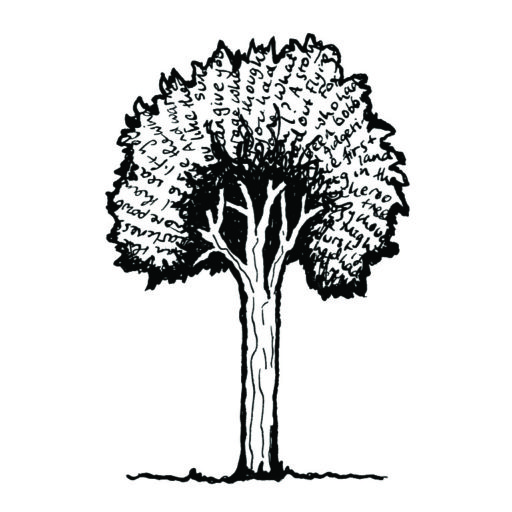
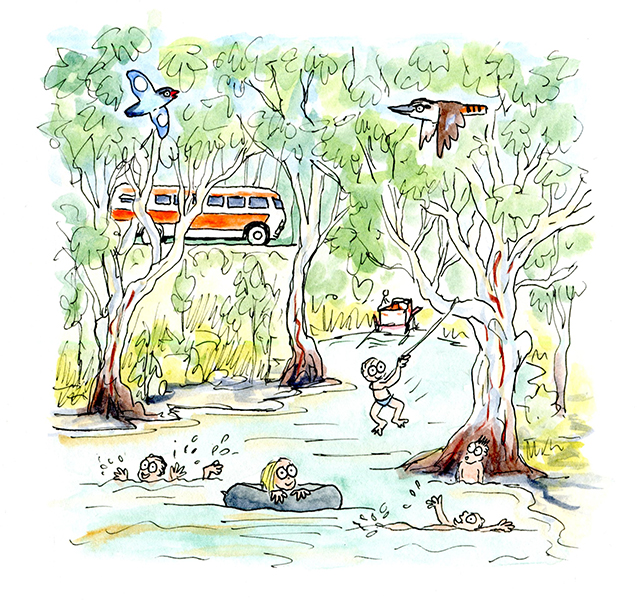
This is fantastic Paula, I love it. Can’t wait to see the next issue.
Wonderful for learning and inquisitive minds of any age, thankyou Paula for your your detailed research and the clear passion you have for sharing this with the world.
Just wonderful!
Easy to read. Facts without waffle. Terrific! Thank you!
Thank you Ann! I don’t like waffle either 🙂
Thank you Paul!
Thanks Rhonda for reading, and for your encouragement over many years now!
As an arid rangelands ecologist-botanist, I adore your work. You inspired me to return to the nature journalling I did as a teen back in the 80’s. I loved out of the old Gould League nature books as a child, but as an adult I immerse myself in your books, newsletters and drawings. Thank you especially for your blogs on forest structure. Love seeing type of information presented so well for the average person to understand
Thank you Kirsten! I’m thrilled that you’ve gone back to nature journaling, such a great pastime. And I loved all of those Gould League books and posters too, when I was a kid. Nice to think that maybe some of the spirit (that others poured into the Gould League books) is now coming through somehow through my work. Thanks for reading! Cheers, Paula
You are a gift to the natural world! Thank you Paula for keeping us interested and inspired!
Aww Susan, so are you! Thanks for your encouragement and enthusiasm 🙂
Thank you Paula … your generosity is inspiring.
Thanks!
I can only imagine the time you have put into this, great lot of info in one place and so nicely told. Ill be pointing people in the direction of this blog to get a 101 on forest ecology. Looking forward to issue #2
Hey thanks Liz, it is a labour of love, but I love creating it! And I’ll be collaborating with other ecologists as I go. Issue #2 is coming along, just a few more drawings and scientific details to be ironed out before it hits the blog.